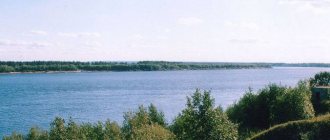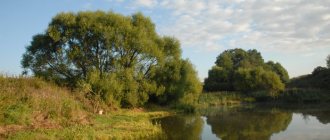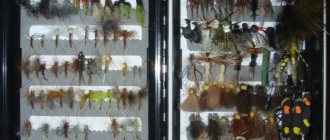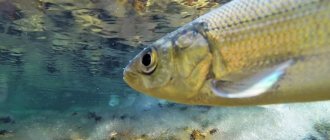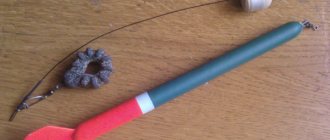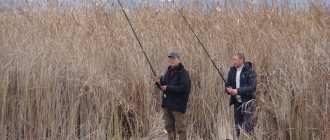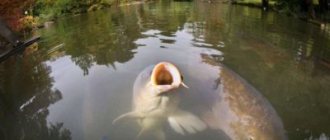Fishing on the Onon River
The name Onon means little to the average Russian. However, this rugged Siberian river is remarkable in many ways. Some scientists believe that this is where the source of the Amur River is located. This is a small, uncharted stream, Onon-Gol, high in the mountains of Mongolia. In 2008, a sign was even installed in its upper reaches with the inscription “The Russian Amur River begins here.”
Where was Genghis Khan born?
Onon is remarkable not only geographically, but also historically. So, the birth and death of Genghis Khan are associated with this river. Most scholars agree that the great Mongol commander was born somewhere in the Delyun Baldok Valley. But where exactly is where opinions differ. Russian historians, citing Buryat legends, point to a tract on the right bank of the Onon, 8 km north of the border.
Their Mongolian colleagues, interpreting the “Secret Legend” of the Mongols, claim that Genghis Khan was born in the upper reaches of the river, not far from its confluence with Baljin. According to one version, the conqueror was buried here, at the foot of Mount Burkhan-Khaldun.
Legends and myths of Onon
The legend of the birth of Genghis Khan is not the only legend of Onon. All kinds of myths and beliefs surround the river to this day. They are mainly associated with mermaids. They tell, for example, about three fishermen who were setting their nets and saw something in the water suddenly sparkle brighter than the sun. We returned home two days later. Where they were and what they did, no one remembers. And since then, all three had dreams of a beautiful mermaid. According to another legend, mermaids have a whole kingdom at the bottom of Onon, where they can drag unwary swimmers.
Local residents treat the river with almost religious fear and reverence. It's not hard to see why. Onon's character is indeed very complex: the current is fast, the bottom is strewn with sharp stones, and numerous treacherous funnels are hidden under the surface of the water. According to legend, they drag in anyone who does not show due respect to the river. Onon is especially dangerous in summer. At this time, endless floods on the river follow literally one after another, and the current can accelerate 10-15 times. So you must swim in Onon and go out on a boat with extreme caution.
Fish treasures
The fish wealth of Onon is also the subject of numerous legends. True, in this case the stories are absolutely true. Few rivers can boast such reserves of rare and valuable fish. Trout, grayling, asp, catfish, pike are just a few representatives of the fauna of Onon. In addition, there are even crayfish, which are not found in any other river in Siberia.
Fishing for taimen, which reaches unprecedented sizes, is especially popular on Onon. The largest specimen caught was 2.1 m long, and meter-long fish are quite common. Here you can also find a completely incredible giant - Kaluga. This Red Book fish often grows up to 5-6 m. Local residents talk about giant river monsters that overturn fishing boats. The largest kaluga on Onon was caught before the Great Patriotic War. They took it away on a tractor, and the huge fish didn’t even fit into the back - most of it was dragged along the ground.
For carp to the river
Tales and secrets of the great Onon
Onon (from the Buryats, it(n) - 'fork'), originating in northeastern Mongolia, is the right component of the Shilka River (Amur basin). The river is fed primarily by melting snow. According to the conditions of the water regime, the river belongs to the Far Eastern type with a well-defined predominance of rain runoff.
The open spaces located along the banks of the river are colorful and picturesque.
By the way, Onon himself is famous for his cunning and power. People living near the reservoir tell visitors that the waters of the Onon contain numerous sinkholes that “devour” people who do not respect the river in a matter of minutes.
TILES OF LOCAL RESIDENTS
– Since childhood, my grandfather told me that you need to be extremely careful when swimming in Onon. Allegedly, even professional swimmers died in the waters of this river. And our neighbors, pensioners, told us that at the bottom of the river there is its own kingdom with evil spirits,” shared Yuri, a resident of the village of Olovyannaya.
“And my father,” the neighbor interrupts the interlocutor, “was an avid fisherman, and fished exclusively on Onon.” My father believed that Onon fish was the most delicious and healthy, and our crucian carp is still particularly popular among Transbaikal residents. There is nothing sweeter than it.
So, regarding fishing: “One day in the year 1950 of the last century, the father of a family from Yasnogorsk came home from another fishing trip. At the same time, a courageous man, and also a police officer, appeared before his family at that moment, not to say that he was scared, but somehow discouraged. And most importantly, the man didn’t bring any fish... In the evening he couldn’t stand it and told his wife. They say they arrived in the evening with their comrades at the fishing spot. We set up our tents and, already at dusk, began to set up our nets, when suddenly something brighter than the sun appeared in the water. So the men forgot why they came here, they woke up two days later. Nobody remembered where they were. Only since then all three have suffered grief - the fishermen have had the same dream - a beautiful mermaid.”
Characteristics of the Onon River
Location
The Onon River originates in Mongolia, in the eastern part of the Khentei Highlands, and flows through the territory of Mongolia and the Trans-Baikal Territory of Russia. Merging with Sometimes, it forms Shilka, the left component of Amur. You can get to the coast by road from Chita.
Geographical data
The length of the river is 1032 km. The pool area is 96 thousand square meters. km. The average depth is about 3 m; during floods it increases many times.
Fishing on the lakes of Transbaikalia
Separately, we should talk about the lakes of Transbaikalia. Their number is huge and describing even the main ones can take a lot of time, so the lakes will be presented in geographical groups.
Steppe lakes
Located in the south of the region. First of all, it should be noted that the largest are Barun-Torey and Zun-Torey, with an area of 600 and 260 square meters. km respectively. Despite the fact that their area significantly depends on the amount of precipitation, they contain a large number of different fish: pike, spiked fish, taimen, perch, goby, burbot, etc.
Lake Kenon
An interesting body of water, convenient primarily because it is located on the outskirts of the city of Chita (which is home to a third of the residents of the Trans-Baikal Territory), which greatly simplifies the ability to get to it. Naturally, such a reservoir is very popular.
The area of Kenon is almost 1500 hectares, the nature of the bottom is sand and pebble. One of the interesting inhabitants of Kenon is the golden crucian carp - a large (up to 3 kg) fish whose taste is practically no different from river carp. In addition to this, the lake contains:
- perch;
- chebak;
- catfish;
- pike;
- White amur.
Northern lakes
As the name suggests, they are located in the north of the region. Most of them are located in the remote taiga, and getting to them is not easy. The most famous are Arey, Tanga and Nikolaevskoye. On the shore of the first, located a few kilometers from the village of Salia, there is even some semblance of a tourist town, since its water is considered healing.
Tanga and Nikolaevskoye are located near settlements with similar names. These are fairly deep lakes with clean and transparent water.
In all three lakes there are golden crucian carp, pike, and chebak.
Beklemishevskie lakes
This group of lakes also has another name: Ivano-Arakhleiskaya. They are located near the Yablonovy Ridge, located approximately 80 km from Chita. There are quite a lot of lakes here:
- Ivan;
- Tasey;
- Arakhlei;
- Shaksha;
- Big and Small Undugun;
- Irgen;
- Kirandinka.
On the Beklemishevsky lakes there are:
- perch;
- pike;
- crucian carp;
- bulus;
- chebak;
- Baikal ide;
- Amur catfish;
- carp;
- chir;
- peled;
- and many others.
There is a good road to the lakes and the number of fishermen coming here is increasing every year.
You need to place a frog or fish on a hook so that the hook pierces through both lips and the sting comes out slightly from above. The best live bait for burbot is a gudgeon.
The best time to catch burbot is from November to January inclusive. In February his eating stops. The baits for winter fishing are the same as in the fall.
Fishing lines should not be thick, with a diameter of 0.5–0.6 mm, hooks No. 12–14, slightly bent to the side. Having caught a burbot, the leash with the nozzle is cut off, because it is impossible to pull out the hook.
When winter fishing, you need to know the burbot's anchorages - it prefers deep places, not far from the shore, in calm and slow currents, where there are underground springs.
You need to drill holes in the shape of a truncated cone, with a diameter of 25–30 cm. Moreover, do this during the day, when the burbot does not hear noise, hiding in its shelters until dark.
It must be borne in mind that in Transbaikalia there is a so-called lake burbot, the body of which is much shorter than the river burbot, and its color is darker, with a marbled tint. Lake burbot grows faster than river burbot.
COM
Large Amur catfish live in the rivers of Transbaikalia. Often its weight is 12–16 kilograms. Specimens over 4 meters long and weighing about 300 kilograms have been recorded. There is especially a lot of catfish in Onon, Shilka, and Ingoda.
It is easy to recognize - the catfish has two long whiskers on its upper lip, and four short whiskers on its lower lip, which are used to find food. The body of the catfish is covered with abundant mucus, especially at the tail, so it is almost impossible to hold it in your hands; it slips out freely.
Favorite places for catfish are deep holes and reaches with a muddy bottom, hollows of steep banks with overhanging bushes, and snags in rivers and lakes. On hot days, catfish go out into the fast current under the rifts with a rocky bottom. Lake catfish, especially large ones, live alone, while river catfish gather in small schools. In search of food, catfish are able to move on land, through morning dew, climb boulders, and can lie on them and bask in the sun for several hours. For the winter, catfish lie down in deep holes.
Catfish feed on small fish, frogs, worms, and do not disdain carrion; they attack swimming ducks and geese. You can catch it using a spinning rod with a spinner, hooks, live bait (jigs) and bottom fishing rods.
Catfish are not picky about baits; they successfully take on pieces of rotten meat from animals, poultry and rodents, even take on a piece of burnt felt made according to the type and size of a mouse, on a bright orange sponge from a baby washcloth, on spoons of various sizes and colors, but prefers a yellow spoon baited with a small piece of orange sponge on the anchor. For fishing, it is best to use vein line with a diameter of 0.6–0.7 mm. Hooks are usually larger, No. 14–18, forged, with a short shank. The nozzle should completely cover the hook. When fishing with a spinning rod, you need to reel in the reel slowly, move the spoon along the bottom so that it periodically clings to the muddy bottom and raises the turbidity; usually the catfish takes the bait when it comes out of the water.
The line for spinning should be veined, with a diameter of 06.-0.7 mm, length - 100 m. The best spinners for fishing catfish should be considered rotating ones of the “Baikal” type, medium in size, tees using large and wide ones No. 12–14. I also advise you to wear a small plumage of red wool or a small piece of orange or bright red sponge on the anchor.
It is especially successful to catch catfish in good weather, on clear days and during night fogs. On foggy early mornings, large catfish are usually taken. It is caught well in the evening hours, until midnight, and then the feeding stops until dawn.
There are a lot of catfish below the mouth of the Ilya River, on wide and deep reaches under rocks, on the Ingoda River, in Lake Kenon.
Having felt itself on a hook or on a kukan, the catfish immediately begins to fight vigorously. It behaves especially violently in shallow places - it tumbles, hits the water with its tail, and makes noise. A large catfish, once hooked, immediately moves away, trying to go deeper, downstream, and it is almost impossible to stop it at this time.
To tire the catfish as quickly as possible, you need to immediately move it from its place, without giving it a minute of rest - to do this, you need to tug on the fishing line or knock on the rod, or throw stones and sticks nearby until the catfish loses strength and, tired , will not float to the surface of the water.
When fishing, it is better to use a gently sloping shore, a sand spit or a shallow. As a rule, it is not recommended to hook the catfish at the tail, since its body will be completely free, and it can tear the hook out of the fisherman’s hands. It is generally impossible to hold a catfish, especially a large one, with your hands, since its body is covered with abundant mucus and is very slippery.
When fishing for catfish, you should not fuss or rush - act absolutely calmly and sedately. Under no circumstances should you wrap the line around your hands, fingers or toes, especially if the line is strong. After all, once hooked, a large-sized catfish can freely drag a person into the water and, going into its deep shelter, even drown him. Unfortunately, such cases have happened. Sometimes a large catfish can drag a fisherman along the shore for several meters. I myself saw how some fishermen in such cases let go of their prey and threw it away along with the line. It turns out that catfish can defeat unlucky fishermen.
After the catfish is brought onto land and removed from the hook, it is necessary to put it to sleep with a blow to the head or, leaving it alive, put it on a kukan made of thick veined wood, which the catfish could not bite.
Do not leave the catfish alive in a fishing bag lying on the shore - when you get carried away with fishing, it will silently go back into the water. A catfish can successfully escape from a kukan carelessly made from a fragile piece of rope or twine - the catfish, having many teeth in its mouth, gnaws them.
CARP
Carp is a representative of carp species, a freshwater, schooling fish. In Transbaikalia, the Amur carp is mainly widespread - in the rivers Shilka, Arguni, Onon and in the lakes of the Beklemishevskaya system - Shaksha, Arakhleya, Ivan, Bolshoy Undugun, as well as in Kenon.
The body of the carp is not long, slightly flattened on the sides, covered with large dark golden scales, the scales on the back are darker. On the lips there are two pairs of antennae.
Once the rivers are freed from ice and until spawning, the carp has a good meal. Spawning occurs from the end of May until July. At this time, the carp does not take any bait.
The carp feeds mainly on underwater insects, worms and mollusks. In winter it does not feed, but lies in deep places, where it gathers in whole schools. Its favorite sites are the middles of wide reaches, places with a reverse current, with a sharp difference in depths; it usually stays among thickets and reeds; in lakes it loves underwater ridges, hummocks, and spits with a silted bottom. The presence of carp can be detected by its frequent bursts.
The best time to catch carp is morning and evening dawn. It’s good if there is not a strong wind blowing and small ripples play on the water.
Carp almost always takes a garden worm, especially one flavored with hemp oil. To do this, 3–4 days before the start of fishing, the dug worms are placed in a small wooden box with black soil, without a single crack, and placed in a darkened room. Every day, water the ground (1-2 tablespoons) with hemp oil, or sunflower oil, and after 20-30 minutes, sprinkle it with warm water.
To catch larger carp, they use bread baits - take baked wheat bread (better than country-grinding and baking in a Russian oven), knead the crumb in hemp or sunflower oil, lower it into boiling water for a few seconds, and then make small, pea-sized pieces. balls and place them on the hook so as to completely bury the curved part of the hook. Sometimes the carp lands on baits made from fresh garden peas.
A fishing rod with a nozzle should not be cast further than 3–4 m from the shore, since the carp usually stands above the pits, close to the shelters. The nozzle should be 10–14 cm from the bottom, so you need to have a small sinker on the fishing line, preferably an oblong one, in the shape of an olive.
To catch carp, you need a strong bamboo or larch rod 4–5 m long, consisting of three legs, with a good and strong upper end. It is best to pass four balalaika strings along its entire length, evenly distributing them around the circumference, wrap them tightly with a good, but not thick silk thread, and paint them two or three times with waterproof oil paint. A carp fisherman usually equips his fishing rod with a small wire reel, since the carp is a strong and quite cunning fish; after hooking, it is capable of doing tricks that are unexpected for the fisherman, stretching the line to the limit or weakening it, and then making a strong jerk. It is best to use thin line 0.4–0.5 mm; hooks can be taken No. 8.5–10 with a well-sharpened tip slightly bent to the side, with a short shank. Having discovered a carp camp, many fishermen feed it at certain hours, using steamed grains of corn and wheat, porridge, cake, peas, boiled potatoes, or worms cut into small slices. You need to know the carp’s “law” - it always goes upstream to feed, so the bait should be done above its permanent stop; for this, choose a place with a weak current, but not in a quiet place, since the bait must necessarily, albeit slowly, be carried away with the current. Then the carp discovers it faster, will eat it and at the same time rise to the main bait site, to where it will be caught. Experienced bait fishermen say that the bait should be lowered at a depth of 2 to 4 m, since large fish will be attracted to shallower areas.
